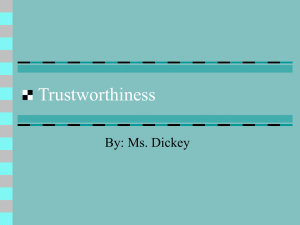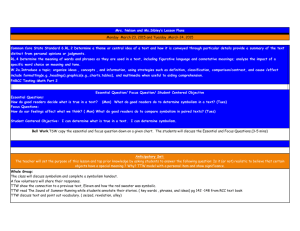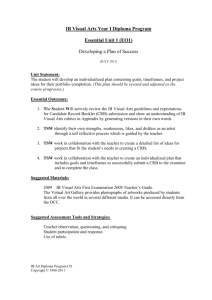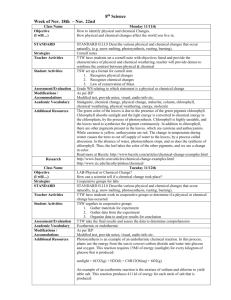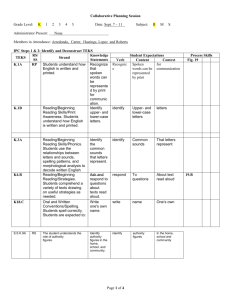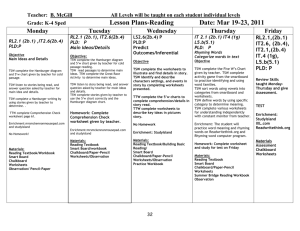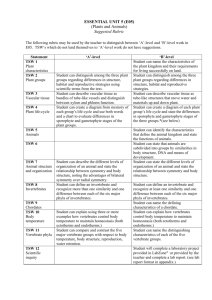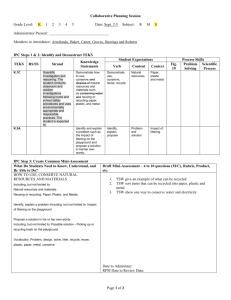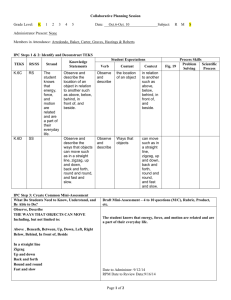Character Unit Lesson 3 Trustworthiness
advertisement
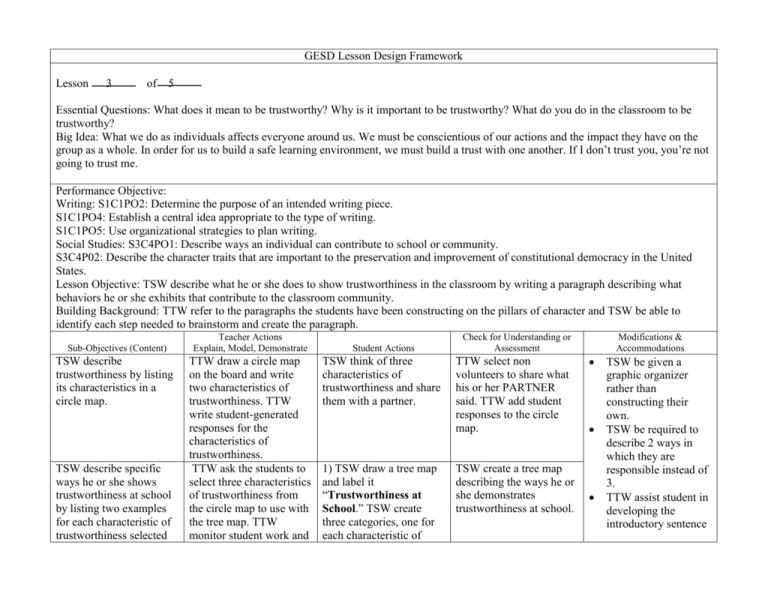
GESD Lesson Design Framework Lesson 3 of 5 Essential Questions: What does it mean to be trustworthy? Why is it important to be trustworthy? What do you do in the classroom to be trustworthy? Big Idea: What we do as individuals affects everyone around us. We must be conscientious of our actions and the impact they have on the group as a whole. In order for us to build a safe learning environment, we must build a trust with one another. If I don’t trust you, you’re not going to trust me. Performance Objective: Writing: S1C1PO2: Determine the purpose of an intended writing piece. S1C1PO4: Establish a central idea appropriate to the type of writing. S1C1PO5: Use organizational strategies to plan writing. Social Studies: S3C4PO1: Describe ways an individual can contribute to school or community. S3C4P02: Describe the character traits that are important to the preservation and improvement of constitutional democracy in the United States. Lesson Objective: TSW describe what he or she does to show trustworthiness in the classroom by writing a paragraph describing what behaviors he or she exhibits that contribute to the classroom community. Building Background: TTW refer to the paragraphs the students have been constructing on the pillars of character and TSW be able to identify each step needed to brainstorm and create the paragraph. Sub-Objectives (Content) TSW describe trustworthiness by listing its characteristics in a circle map. TSW describe specific ways he or she shows trustworthiness at school by listing two examples for each characteristic of trustworthiness selected Teacher Actions Explain, Model, Demonstrate TTW draw a circle map on the board and write two characteristics of trustworthiness. TTW write student-generated responses for the characteristics of trustworthiness. TTW ask the students to select three characteristics of trustworthiness from the circle map to use with the tree map. TTW monitor student work and Student Actions TSW think of three characteristics of trustworthiness and share them with a partner. 1) TSW draw a tree map and label it “Trustworthiness at School.” TSW create three categories, one for each characteristic of Check for Understanding or Assessment TTW select non volunteers to share what his or her PARTNER said. TTW add student responses to the circle map. TSW create a tree map describing the ways he or she demonstrates trustworthiness at school. Modifications & Accommodations TSW be given a graphic organizer rather than constructing their own. TSW be required to describe 2 ways in which they are responsible instead of 3. TTW assist student in developing the introductory sentence for the tree map. TSW describe what he or she does to show trustworthiness in the classroom by writing a paragraph describing what behaviors he or she exhibits that contribute to the classroom community. guide responses as needed. trustworthiness. 2) TSW think of ways he or she shows trustworthiness at school and share them with a partner. 3) Under each characteristic of trustworthiness on the tree map, TSW describe two ways the characteristic is demonstrated at school. TTW ask students to 1) TSW identify his or recall how to construct a her topic topic sentence. TTW have (trustworthiness at the students write a school) and write a topic descriptive paragraph that sentence. must explain three ways, 2) TSW write a sentence with examples, he or she about the first exhibits trustworthiness in characteristic of the class. trustworthiness from the tree map and describe the two ways it is demonstrated at school. 3) TSW repeat step 2 for the rest of the categories from the tree map. 4) TSW write a concluding sentence for his or her paragraph about trustworthiness at home. and the concluding sentence. TSW create a descriptive paragraph on the ways in which he or she exhibits trustworthiness in the classroom.

